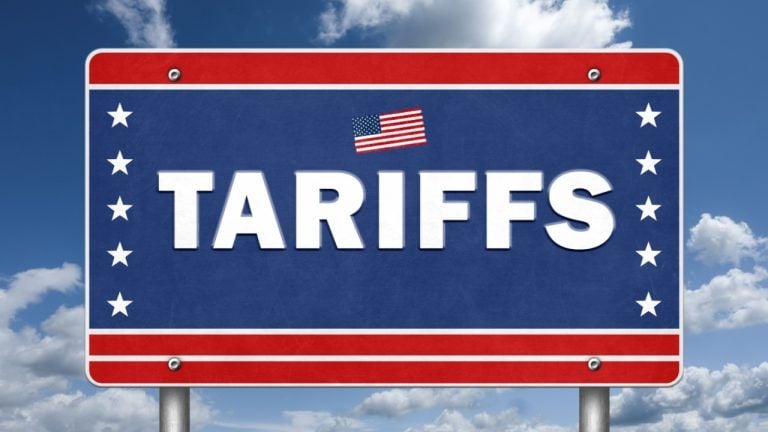
Is there a future for digital fashion in the Metaverse?

With the rising popularity of the Metaverse, the digital fashion industry turns into a global empire, involving both the major luxury brands and retail consumers.
ourtesy of Kat Taylor Cattytay, digital fashion appeared in 2017. However, we began to talk loudly about it only in 2020. It all began five years ago when Kat first made an Instagram post with the caption “Virtual Clothing!!!”

Then, there was a collaboration with Adidas, Off-White, Vetements and Balenciaga. These brands were interested in introducing fashion digitalization even before it blew up in the mass media discourse. Note that the COVID-19 pandemic had yet to happen and people were not stuck at home. Thus, there was no need for digital clothing at all. Nevertheless, it happened and fashion digitalization was predicting the future in the virtual realm.
Related: Haute Couture goes NFT: Digitalization at the Paris Fashion Week
Of course, we all have tested virtual clothing in computer games way before Cattytay, but it was far from the fashion. Beggars can’t be choosers, as we say. These were jeans and shirts in the Sims and various armor in Shooters. But, no one could even imagine that in the near future, we would try on brand sneakers in a specially created application or that we would do it even for money, as it happened in March 2021 with the collaboration between Gucci and the Belarussian company Wanna. The first virtual sneakers could be bought in the Gucci application for $12.99 and they could be tried on in Wanna Kiks for $9.00 where, in addition to sneakers, you could purchase them (well, rather take a photo on them) and other accessories.

And, it reasonably raises some questions: Why would anyone want it? Who needs it all? What would you do with it? Digital fashion lovers claim that this is how they save the environment. As some put it: There is no need to buy a real thing for a photo on Instagram. Well, but what’s next? What is the percentage of people who will constantly buy digital things for posts on social networks? Would that be just for fun? Would that be all the time?
There are several probable scenarios. The first one, and the most realistic, is the digital fitting rooms. In order to see how new potential clothing fits you, it would be nice to try it on without leaving your home. It would be wise to attract customers to these potential applications. Some stores are trying to implement this feature. At this stage, however, everything is quite buggy. People are still getting entertained and this feature attracts customers. In general, this gives a picture of the attitude of real users to digital fashion. Currently, it’s like a game for them, while brands see it as a marketing opportunity.
Related: Blockchain-enabled digital fashion creates new business models for brands
Digital fashion and gaming industry
Next, where we can use digital fashion is, of course, computer games. For example, with the landmark collaboration between Balenciaga and Fortnite, buying a Balenciaga-inspired skin in the game grants you the opportunity to buy the piece in real life.

You’ve dressed up yourself, then dress up your character — what a stroke of genius for gamers. Fortnite generally makes good money on built-in purchases, as users have spent over a billion dollars on in-game purchases for their characters.

However, there is an issue with interoperability: The purchased skin for one game will not work in another. You dress up your character but you’ll no longer have your photo for social media. In such a way, we got Moschino skins for The Sims and Gucci for Tennis Clash.
In 2021, Balenciaga presented a collection in a gaming format where all the characters are dressed in the latest season’s clothing. Thus, the cyber aesthetics came into the real-world fashion: what was once only within video games we are starting to wear in the real world
Since Mark Zuckerberg announced the creation of a Metaverse, it seems that the digitalized and virtualized reality is becoming more and more natural, or even new normal. It simply means that we all will need to build houses and wear clothes in virtual reality as well as in the real world: whether it’s for meeting friends, for teaching classes or business negotiations. During one of these negotiations, Demna Gvasalia, creative director of Balenciaga, already gave an interview in virtual reality.

Therefore, we must already think not only about digital fashion but also about digital design, so that paintings in NFT-form can be hung on the walls, regardless of practicality.
Related: Why are major global brands experimenting with NFTs in the Metaverse?
The empire of digital fashion
In a short time, the digital fashion market grew into a huge empire, incomprehensible to most users. Entrepreneurial businessmen develop beautiful stories where we can hear about sustainability, protecting the planet and unusual designs that will never be implemented because they are simply unrealistic for production.
Brands are happy to use digital fashion as another coverage opportunity but, in fact, it is not applicable and is not as beautiful in life, as may sound. For example, during the pandemic, Russian brand Alexander Terekhov launched a promotion where his couture dresses could be placed on a photo for $50. According to the comments from participants, it turns out that there was a huge number of difficulties and pitfalls — the deadlines were delayed due to the fact that the photos did not fit and the dresses did not look right on the client. However, the brand received the desired coverage opportunity in the media.
Therefore, digital fashion is another tool for promoting the brand or a way to earn money for startups and digital designers. In a couple of months and for $700, all secrets of the new market will be revealed and one would be able to bring their brand to the world of meta fashion. However, the future is unclear. Will you design dresses for already famous brands or will you make your own? Will they actually wear the clothes you make in the Metaverse or use ready-made photos for $50?
Will Metaverse executives promote fashion to the masses and how will brands get along? Will there be meta-stores or will all clothes appear with a click? How will it deal with counterfeits and will the brands unite into something bigger?
So far, there are more questions than answers, but we are obviously on the verge of a new and very exciting industry that everyone is interested in.
This article does not contain investment advice or recommendations. Every investment and trading move involves risk, and readers should conduct their own research when making a decision.
The views, thoughts and opinions expressed here are the author’s alone and do not necessarily reflect or represent the views and opinions of Cointelegraph.
Go to Source
Author: Inna Kombarova









